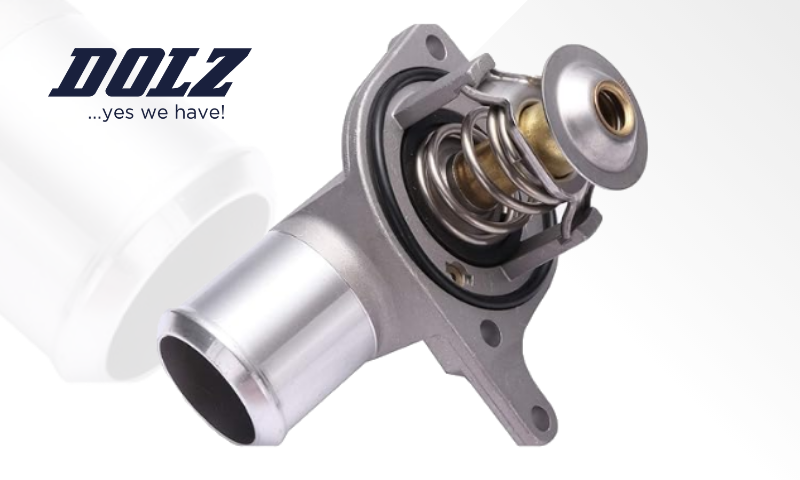As we have seen in previous articles, to prevent the coolant from boiling, the cooling system is designed to be pressurized.
Its operating principle is the heat generated during fuel combustion, which migrates to the engine components, is transmitted to the coolant. So, the cooling system serves three important functions. First, it removes excess heat from the engine; second, it maintains the engine operating temperature where it works most efficiently; and finally, it brings the engine up to the right operating temperature as quickly as possible.
This system is composed of five main parts—a radiator, a water pump, a cooling fan, hoses, and a thermostat. And it is precisely this last component that we focus on in today’s blog. Read on to learn why this small but essential component should not be underestimated.
Read on to learn more about an engine’s thermostat, as well as how to detect a damaged thermostat and how it protects our engine from damages due to overheating.
Importance of a properly operating thermostat
Thermostat is one of the most misunderstood parts of a car despite this device was a decisive improvement to engine cooling. The engine is designed to be maintained at a stable temperature, which is the purpose of the thermostat, vital for regulating your vehicle’s temperature across a range of operation conditions. It is placed between the engine and the radiator to make sure that the coolant stays above a certain preset temperature. Without this part, the engine would always lose heat to the radiator and take longer to warm up.
In order to keep your engine in top condition, you need to keep your car thermostat in good condition as well. Besides, by performing its function properly, will be an advantage in the following areas:
- Will reduce engine wear.
- Engine overheating will be avoided.
- Will save the driving force from many other hazards.
- Will improve fuel economy.
Should I Change a damaged thermostat?
The car thermostat is basically like a temperature sensor for your engine. Once the thermostat goes bad, it is no longer able to sense the right temperature in your engine.
Certain installation problems can both shorten the lifespans of thermostats and affect their ability to get accurate temperature readings. Unfortunately, engine thermostats can, and do fail from time to time. That’s why, in light of the above, it is highly recommended that the thermostat is properly maintained.
The lifespan of a car thermostat can easily cross 10 years or more. Hence, it’s not easy to answer how long a car thermostat lasts.
Signs of a damaged thermostat
There are a few easily recognizable signs that your cooling thermostat may have given up the ghost and needs fixing, so keep an eye out for the following bad thermostat symptoms:
- Unusually high temperature reading.
- Air temperature changes.
- Your vehicle makes concerning noises.
- Leaking coolant. If the coolant can’t reach the radiator, it can eventually damage the hoses and cause leaks.
- Heater problems.
The importance of vehicle inspection cannot be overstated, so, now that you know how important a car’s thermostat is and, because so many other engine parts rely on the thermostat’s functionality and readings, you should be sure to get the thermostat looked at or replaced if you think it might be faulty. Otherwise, your engine could suffer irreversible damage and other serious problems.
Stay tuned to the DOLZ’s leading blogs for more information on car parts, market trends and latest news.
Click and whatch! Dolz Thermostats Unboxing.
Why choose Dolz?
Once again at Industrias Dolz we combine the latest technology with coordinated planning and flexible production, which allows us to provide our customers with the best possible service and quality.
All our thermostats are integrated thermostats that adjust the coolant flow towards the radiator, deciding when and how heat is added. Most of our thermostats are map-controlled.
About us
Our experience of almost 90 years in the aftermarket sector allows us to offer innovative solutions and a competitive range of products that meet the highest quality standards.
With a global presence in more than 70 countries worldwide, Industrias Dolz has 3 manufacturing plants located in Spain (Castellon), Argentina (Buenos Aires) and China (Shouzou) and different commercial offices.
Having a full implemented manufacturing processes ‘under one roof’, we can guarantee the total quality of our products, since all processes have quality validations, supplies and reduced lead-times. It has also been possible thanks to the implementation of the Lean Manufacturing method in our facilities.


